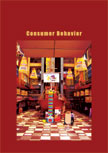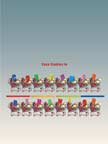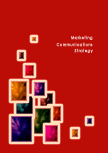Consumers Behavior
 |
Details
Chapter Code: CBC05
Textbook:
210 X 275 mm approx.
Short Case Studies
Detail Table of Contents
Workbook:
Pages : 304; Paperback;
210 X 275 mm approx
Pricing
Textbook Price: Rs. 750;
Workbook Price: Rs. 700;
Shipping & Handling Charges: Rs. 50 per book;
Books Available only in INDIA
Chapter Price : Rs. 100
To download this chapter in electronic format, click on the button below,
and select the chapter from the list of available chapters.
Buy Now
To order the entire book click on the button below, and select the book from
the list of available books:
Please allow 5 to 10 days for delivery of the
Book.
Consumer Behavior : Chapter 5
SUMMARY:
Perception is the process through which a person forms an opinion about the various stimuli he receives from his sensory organs. In marketing, perception is concerned with understanding how the consumer views a product or service. The five senses of a person help him in this process. The marketer uses various props to stimulate the consumer, that is, through the use of colors, sound, touch, taste, or smell, to observe the product.
|
|
However, they sometimes use indiscernible stimuli that are just below a consumer's threshold so as to influence him. This is called subliminal message. Of all the stimuli a consumer comes into contact with, he pays attention to only a few and interprets the messages that he remembers. This is called the process of perception and has the three steps: 1) exposure, 2) attention, and 3) interpretation.
How well the consumer pays attention will depend on the stimulus, and also the consumer's interest and need for that product. The consumer interprets the information in two ways: 1) the literal meaning or the semantic meaning and 2) the psychological meaning. Hence we are guided by our learning as well as the semantic meaning of a word. A consumer also interprets the symbols and other physical features of the product on the basis of his experience and cultural beliefs. This is called semiotics.
Marketers make use of perception to formulate marketing strategies. The marketers use a perceptual map, wherein they find out the attributes or the characteristics that the consumer associates with the product and they create the product accordingly. Thus, development of a brand or the logo of the product, packaging of the product, etc., have to be made keeping the consumer's perception in mind.



